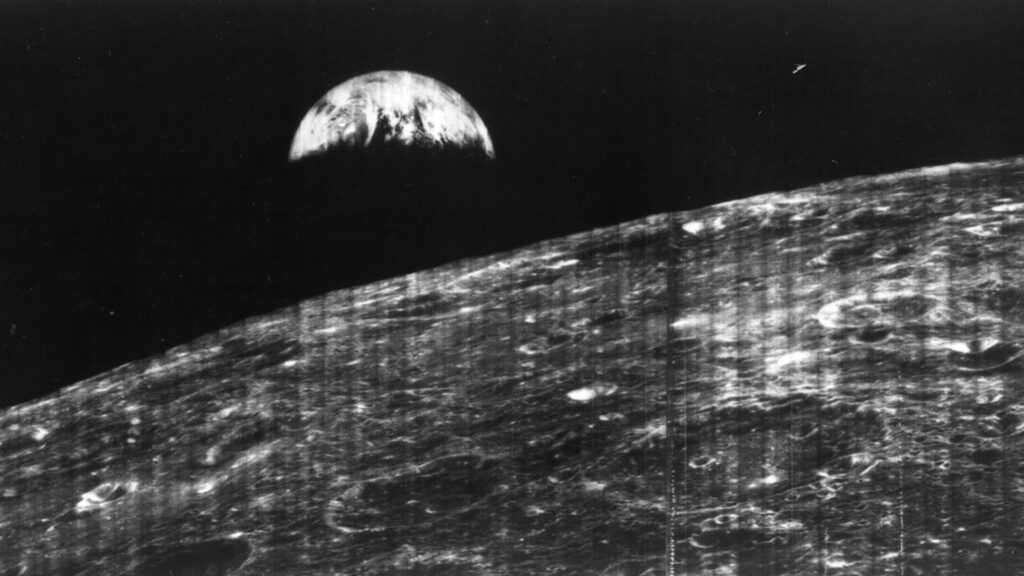
On August 23, 1966, humanity caught its first glimpse of Earth from the moon, a moment that would forever alter our perception of our planet. This historic photograph, captured by NASA’s Lunar Orbiter 1, shows Earth as a crescent rising above the lunar horizon, a view that was both unexpected and awe-inspiring.
The image, transmitted to a tracking station at Robledo De Chavela near Madrid, marked a significant milestone in space exploration. At the time, it was a landmark image — and totally unplanned, according to NASA. The photograph was taken by the first U.S. spacecraft to orbit the moon, which had launched from Cape Canaveral, Florida, on August 10, 1966, aboard an Atlas-Agena D rocket.
The Mission Behind the Image
Lunar Orbiter 1 was on a cartographic mission, tasked with photographing potential landing sites for NASA’s Surveyor and Apollo missions. Despite the spacecraft’s camera system not being highly detailed, it provided far more detailed views from lunar orbit than were possible from Earth through even the largest telescopes at the time.
The camera, manufactured by Eastman Kodak, featured an automated system that developed exposed film, scanned the images, and transmitted them to Earth. Originally developed by the National Reconnaissance Office, it was initially used on Cold War-era Samos spy satellites launched by the U.S. in the 1960s.
A Technical First
During its mission, Lunar Orbiter 1 orbited the moon for 76 days, deliberately crashing into the lunar surface on October 29, 1966. The spacecraft’s camera snapped photographs of nine potential Apollo landing sites and seven backup sites. The iconic image of Earth as a crescent was taken on August 23, 1966, at 16:35 GMT, during the spacecraft’s 16th orbit, just before it passed into the darkness of the moon’s far side.
“The first view of Earth from the moon came from NASA’s Lunar Orbiter 1, which transmitted the image to a tracking station at Robledo De Chavela near Madrid.”
Legacy and Cultural Impact
Over two years later, on Christmas Eve, 1968, Apollo 8 astronaut Bill Anders captured the famous “Earthrise” photo during the first manned lunar orbit mission. This higher-resolution color image quickly became a cultural milestone, capturing humanity’s imagination and highlighting the fragility of our planet.
However, it was Lunar Orbiter 1’s photograph that was the technical first, offering a similar view of Earth rising behind the moon. The significance of this earlier image lies not only in its pioneering nature but also in its role in paving the way for future lunar exploration and the eventual Apollo landings.
By the Numbers: Lunar Orbiter 1 orbited the moon for 76 days, capturing images of 16 potential landing sites.
Looking Forward
The rediscovery of this image serves as a reminder of the rapid advancements in space exploration and the enduring impact of these early missions. As we continue to explore the cosmos, the legacy of Lunar Orbiter 1 and its groundbreaking photograph remains a testament to human curiosity and the quest for knowledge.
The story of ‘Earthrise’ is not just about a photograph; it is about our evolving understanding of our place in the universe. As we look to the future of space exploration, the lessons learned from these early missions will continue to inspire and guide us.







